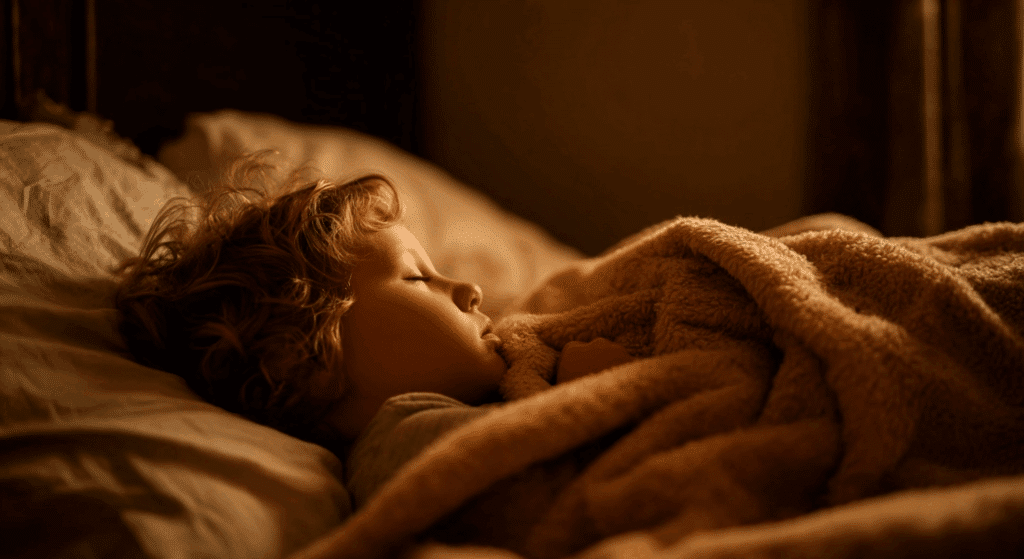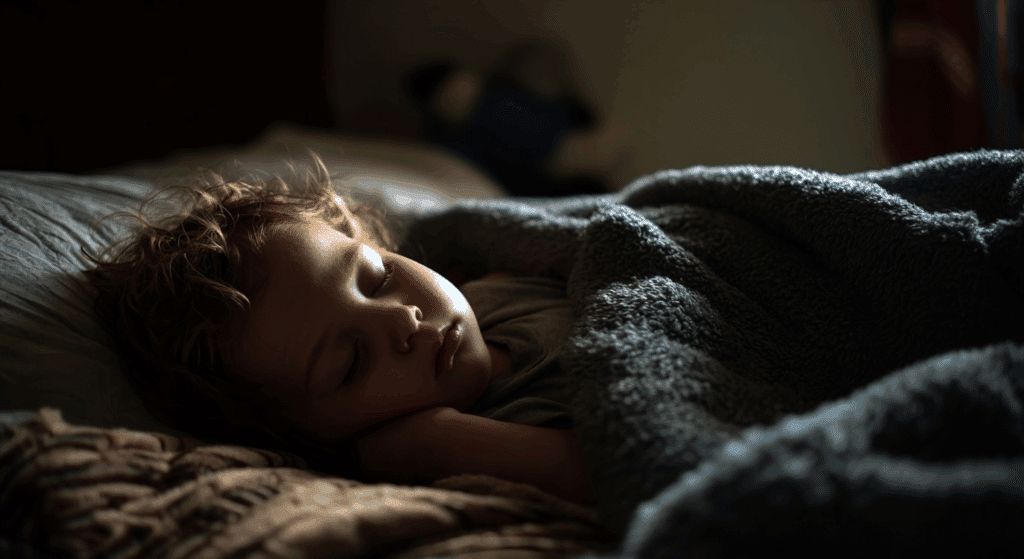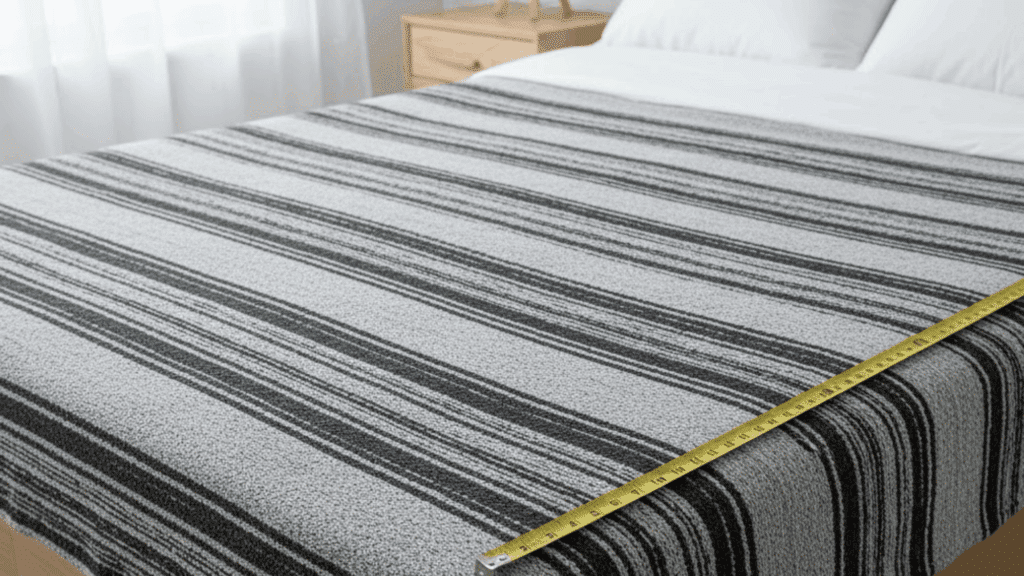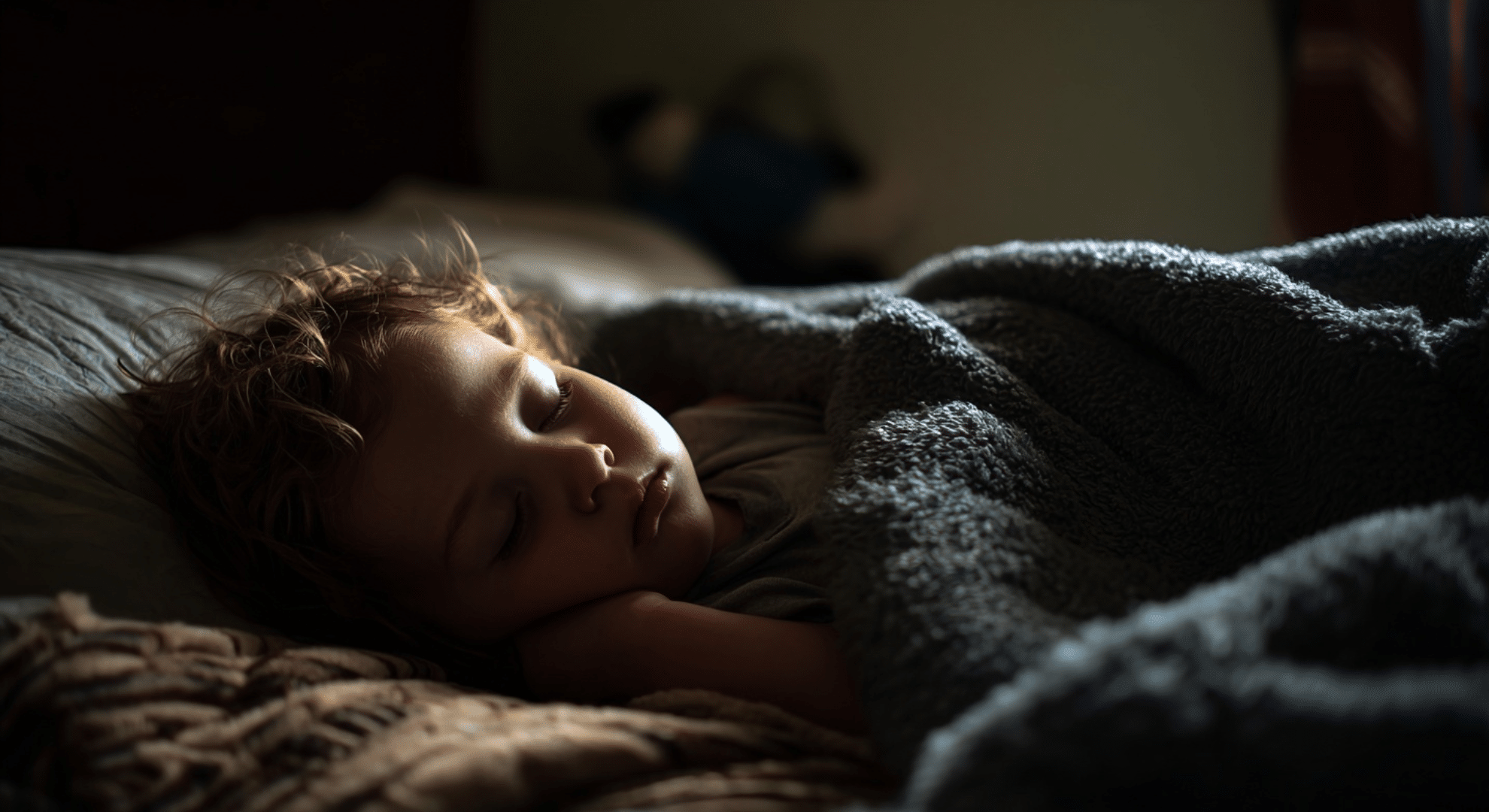I remember coming across videos of toddlers twitching in their sleep and thinking, Is that normal? I didn’t have a clear answer back then, but I was curious.
The small jerks and sudden movements looked odd, almost like something was wrong. As I learned more, I found that a toddler twitching in sleep is usually a normal part of how the brain and body develop during early childhood. It’s not always a reason to worry.
If you’re wondering the same thing, this blog is here to help. You’ll learn what these twitches really mean, why they happen, and when to pay attention.
You’ll also find tips on how to track them, improve your toddler’s sleep, and know when it’s time to ask your doctor.
Understanding Your Toddler’s Sleep Patterns
Toddlers sleep differently from adults. Their sleep moves through light and deep stages, just like ours, but it shifts more often. That’s why they can seem restless.
During sleep, toddlers enter a state called REM sleep. This is a lighter sleep stage where the brain is very active , even more than in adults. Their little bodies are growing fast, and their brains the busy sorting through what they learned during the day.
Because of all this activity, it’s normal to see twitches, tiny jerks, or even hear soft noises. You might notice their arms move, legs kick, or they make sounds.
It can look a bit odd, but it’s part of normal sleep. These movements don’t mean they’re uncomfortable or having a bad dream.
In fact, seeing this shows that your toddler is going through healthy sleep stages. So while it may look strange, it’s usually nothing to worry about.
Why Your Toddler Twitches in Sleep And Why It’s Normal
If you’ve ever watched your toddler sleep and noticed sudden jerks, small twitches, or tiny movements, you’re not alone. Many parents wonder if it’s something to worry about but most of the time, it’s completely normal.
These little movements are often a natural part of how a toddler’s brain and body grow. In fact, they can be a healthy sign of normal neurological development.
Their brain is hard at work, even during sleep, helping them build the skills they need to move and grow.
The Science Behind Sleep Twitching
During sleep, toddlers go through different stages. One of those is called REM sleep (which stands for rapid eye movement). You might see their eyes move under their eyelids or notice little kicks or arm flinches.
But why does this happen?
In REM sleep, the brain sends quick signals to the muscles. These signals can cause short movements, what we call “twitches.” While it may look random, these twitches serve a purpose. They help the brain figure out where the body parts are and how they move.
Think of it like a practice session. The brain is learning how to “talk” to the body, building stronger paths for movement and control.
Also, toddlers spend more time in REM sleep than adults do. That means you’ll likely see more twitching simply because they’re in that active sleep stage longer.
Connection Between Twitching and Milestones
Twitching during sleep isn’t just random movement: it’s tied to motor skill development.
When toddlers are learning to roll over, sit up, crawl, or walk, their brains are practicing those movements, even while they sleep.
Studies suggest that these sleep twitches help reinforce motor memory, which is how their brain remembers and improves body control.
So if your toddler is twitching more than usual, they might be going through a growth spurt or learning a new skill. These movements are signs that their nervous system is growing and getting stronger.
In short, twitching is usually not a problem. It’s a normal, healthy part of brain and body development. It’s one of the many ways toddlers build the skills they need to grow up strong and coordinated.
Other Major Causes Leading to Your Toddler Twitching in Sleep

Twitching during sleep can seem confusing, especially when it happens often. But in most cases, it’s not a sign that something is wrong.
It can be caused by natural body processes or outside factors. Below are the key reasons toddlers twitch in their sleep, from brain growth to bedtime habits.
Sleep Myoclonus
Sleep myoclonus is the term for harmless muscle jerks that happen during sleep. These are fast, light movements like a leg twitch or a tiny arm jerk and are common in both babies and toddlers. Even though they might look strange, they are not a type of seizure.
They happen as the body shifts between sleep stages and usually show up during light sleep. Sleep myoclonus is considered normal and doesn’t need treatment.
Most children grow out of it as their brains mature. Parents often notice these jerks during naps or light sleep, but unless other concerning signs appear, there’s no need to worry.
Hypnic Jerks
Hypnic jerks are those sudden, strong jumps that happen right as your toddler is falling asleep. It might look like they’re startled, or their whole body may give a quick jolt.
These are more likely to happen when a child is very tired or has stayed up too late. Irregular sleep schedules, skipping naps, or bedtime stress can make hypnic jerks happen more often.
Though they can be surprising, they are not harmful and are common in both children and adults. Making sure your toddler has a regular bedtime and a wind-down routine can help reduce these sudden movements.
Brain and Muscle Development
One of the biggest reasons toddlers twitch during sleep is brain growth. When a toddler’s brain sends signals to their muscles during sleep, it’s actually practicing movement.
These twitches help build strong paths between the brain and the body. It’s similar to how they learn to crawl or walk, their brain is training muscles while they sleep.
These “practice” movements occur more often during REM sleep, which toddlers spend more time in than adults do.
This stage is key to brain development. So while it may seem odd, sleep twitching often means their nervous system is growing in the right direction.
Temporary Triggers
Sometimes twitching increases temporarily due to events in or around the body. For example, if your toddler has a fever or is getting over a cold, their sleep may become lighter, and twitching may increase.
Stress, teething pain, or a growth spurt can also lead to increased movement during sleep. In rare cases, twitching may be linked to certain medicines or even caffeine passed through breastmilk.
These kinds of triggers don’t usually last long.
Once the trigger passes, like after an illness, twitching tends to go back to normal. Keeping track of these changes can help.
Environmental Factors
What’s happening around your toddler at bedtime can also affect their sleep and the amount of twitching. Bright lights, loud noises, or too much screen time close to bedtime can make it harder for the brain to settle down.
This may lead to lighter sleep and more twitches. If your toddler watches TV, plays on a tablet, or has a noisy room at bedtime, it might be worth making some small changes.
Try turning off screens an hour before bed, keeping the room quiet and dim, and setting a calm bedtime routine. These simple habits can lead to better sleep and fewer disruptions.
Why Do Babies Jump in Their Sleep?
When babies or toddlers suddenly jump or jerk during sleep, it’s often caused by something called sleep myoclonus. This is the name for quick, harmless muscle jerks that happen as the body relaxes into sleep. It’s very common in newborns and young infants.
At first, these movements can look big: arms may fling out or legs may jump. As babies grow into toddlers, the jumps often turn into smaller twitches.
There’s a difference between baby jumps and toddler twitches.
Babies often have bigger, more dramatic jerks, while toddlers tend to have softer, shorter movements. Still, both are a normal part of sleep.
The good news? This behavior usually fades as the brain continues to grow. As the nervous system matures, the body settles, and sleep becomes more still.
Normal Twitching vs. When to Be Concerned

Most of the time, twitching during sleep is completely normal for babies and toddlers. Their brains are developing rapidly, and much of that work happens during sleep.
These small movements are usually part of that healthy growth. But it’s also okay to wonder when something might not be normal. So how can you tell the difference?
Here’s a simple breakdown:
| Normal Twitching | When to Be Concerned |
|---|---|
| Happens during light or REM sleep | Happens while fully awake |
| Short, quick movements | Long, repeated shaking or stiffening |
| No signs of discomfort or pain | Baby/toddler seems uncomfortable or cries after |
| Movements stop when you gently touch or reposition | Movements continue even after a gentle touch |
| Baby wakes up easily and acts normally | Hard to wake, seems confused, or very sleepy |
| No other health changes | Fever, loss of skills, or other strange behaviors |
If the twitching seems different from the usual, like it happens when your child is awake, very strong, or comes with other signs like fever or loss of balance, it’s a good idea to talk to your doctor.
But remember, the most common cause of sleep twitching is a growing brain doing its job.
If your child is acting normal during the day, hitting their milestones, and sleeping well, those little nighttime twitches are likely just part of growing up.
How to Monitor and Record Twitching?

If you’re unsure if your toddler’s sleep movements are normal, keeping track can really help. Watching closely and writing down what you notice can make it easier to talk with your pediatrician.
It also gives you a better picture of what’s going on. Simple things like taking a short video or writing in a notebook can make a big difference.
Here are some easy ways to monitor twitching:
Record a short video:
- Try to capture the twitching clearly.
- Add timestamps if possible.
- Note if your child stays asleep or wakes up afterward.
- Try to film more than once if the twitching changes.
Keep a sleep log:
- Write down what time the twitching happens.
- Note how long it lasts.
- Look for patterns, such as if it happens more after naps or during sickness.
- Jot down if your child hits a new milestone (like crawling or standing).
Watch for other signs:
- Is your toddler eating well?
- Are they playing normally and full of energy during the day?
- Can they move around and stay balanced without trouble?
If your child is alert, playful, and reaching their milestones during the day, that’s usually a good sign.
Keeping a simple record of nighttime behavior can help give you peace of mind and also help your doctor see the full picture if you ever need to bring it up.
How to Help Your Toddler Sleep Peacefully
Good sleep helps your toddler’s brain and body grow strong. By setting up a calm bedtime and cutting down on distractions, you can lower nighttime twitching and help them sleep more soundly.
Here are a few easy ways to support better sleep:
- Stick to the same bedtime every night, even on weekends.
- Turn off TVs, tablets, and phones at least an hour before bed.
- Keep the room quiet, cool, and dark to help the body relax.
- Dress your toddler in soft, comfy pajamas that don’t cause itching or overheating.
- Add calming activities like reading a short book or singing a lullaby.
- Try a warm bath before bed to soothe the body.
- Watch for signs of overtiredness and offer naps or move bedtime earlier if needed.
When sleep is calm and steady, your toddler’s body gets the rest it needs — and twitching often eases on its own.
Conclusion
I now understand that toddler twitching in sleep is often just a normal part of growing up.
Those little jerks and movements aren’t always a reason to worry; they’re usually signs that the brain and body are working as they should during rest. Learning what’s typical and what’s not helped me feel more at ease.
Now it’s your turn to take what you’ve learned and apply it. Watch for patterns, keep a simple sleep routine, and know when to reach out if something feels off.
You’ve got the tools to support better sleep and feel more confident at night.
If you want more helpful tips like this, check out the rest of the blogs on the website. There’s more to learn, and it’s all here for you!









